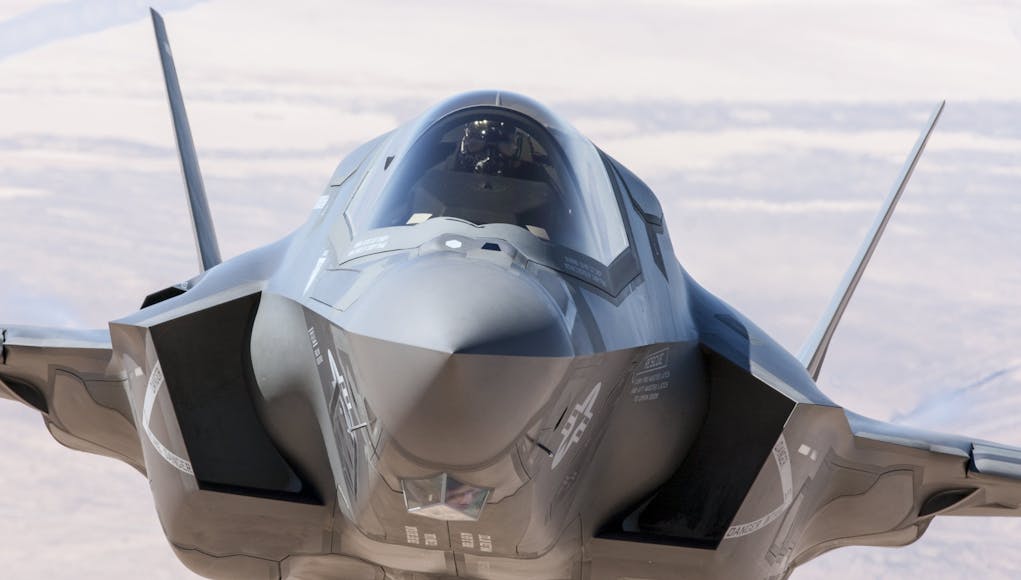Sales of arms and military services by the world’s largest arms-producing and military services companies, the SIPRI Top 100, totalled $374.8 billion in 2016, according to new international arms industry data released by the Stockholm International Peace Research Institute (SIPRI).
The total for the SIPRI Top 100 in 2016 is 1.9 per cent higher compared with 2015 and represents an increase of 38 per cent since 2002 (when SIPRI began reporting corporate arms sales). This is the first year of growth in SIPRI Top 100 arms sales after five consecutive years of decline say the organisation.
At a combined total of $217.2 billion, sales of US companies listed in the SIPRI Top 100 grew by 4.0 per cent in 2016. US military operations overseas as well as acquisitions of large weapon systems by other countries have driven this rise. Arms sales by Lockheed Martin—the world’s largest producer—rose by 10.7 per cent in 2016, which was decisive to the increase in the USA’s share of overall SIPRI Top 100 sales to 57.9 per cent. ‘With the acquisition of helicopter producer Sikorsky in late 2015 and higher delivery volumes of the F-35 combat aircraft, Lockheed Martin reported significant growth in sales in 2016,’ says Aude Fleurant, Director of SIPRI’s Arms and Military Expenditure Programme.
The rise in sales and the number of US military services companies ranked in the SIPRI Top 100 are noticeable trends in 2016. Some of these companies have increased their sales through the acquisition of the military services divisions of larger producers. This was the case for Leidos, for example, which acquired Lockheed Martin’s information technology and technical services businesses in 2016.
Sales by companies in Western Europe remain stable, but trends diverge they say.
The combined arms sales of companies in Western Europe listed in the SIPRI Top 100 remained stable in 2016 at a total of $91.6 billion — an increase of 0.2 per cent compared with 2015. However, the trends for sales in the largest arms-producing countries — namely the United Kingdom, France, Italy and Germany displayed clear divergences. There were overall decreases in the arms sales of Trans-European, French and Italian companies, while companies in the UK and Germany recorded overall increases.
“Germany’s 6.6 per cent increase in arms sales for 2016 is mainly due to the growth in sales of armoured vehicle producer Krauss-Maffei Wegmann (12.8 per cent) and land systems producer Rheinmetall (13.3 per cent)” says SIPRI Senior Researcher Pieter Wezeman.
“Both companies have benefited from demand for arms in Europe, the Middle East and South East Asia.”
The UK’s decision to withdraw from the European Union did not seem to have an impact on the sales of British companies, which rose by 2.0 per cent in 2016. The arms sales of BAE Systems, the fourth largest arms producer globally, remained stable (up by 0.4 per cent). The highest growth by a British company (43.2 per cent) was recorded by GKN, an aerospace components manufacturer.














SIPRI fantastic website if you want to know who has been selling /buying what from at least 1950.
http://armstrade.sipri.org/armstrade/page/trade_register.php
The Military Industrial Complex.
Sadly far higher in government’s priorities than the forces they support.
Maybe a big increase in U.K. spending too. Can we dare to dream that this might come true?
http://flip.it/s_z3jQ
This would be so transformative for the U.K. defence budget that the pessimist in me thinks it must be too good to be true i.e. would never happen.
I’d take that right now rather than a direct increase in the budget.
The result is the same.
I agree. Sadly I bet the costs already incurred in Dreadnought design, CMC joint development etc would stay billed against the defence budget and not get backed out and funds returned. If that happened (defence budget compensated for costs already booked to it) that would probably buy another 3 Astutes – not that we have crew or production capacity to crew/build them right now.